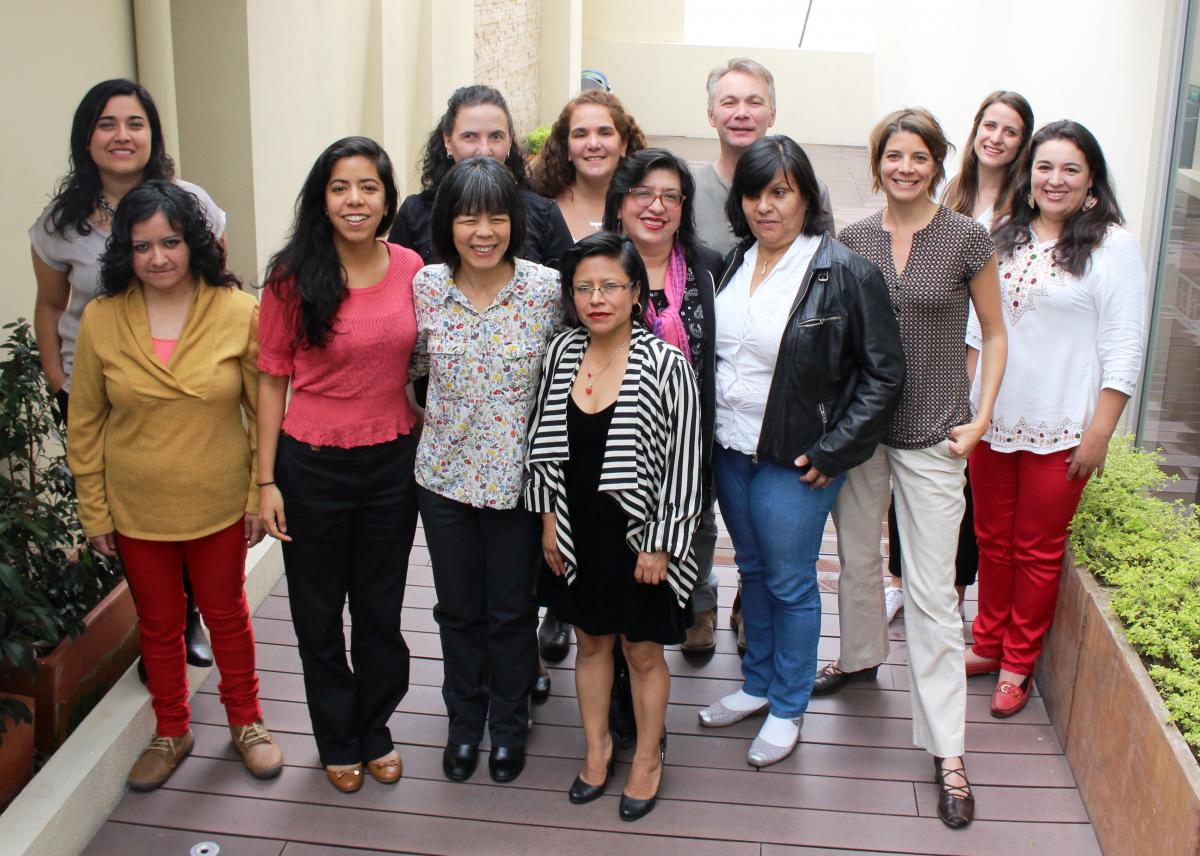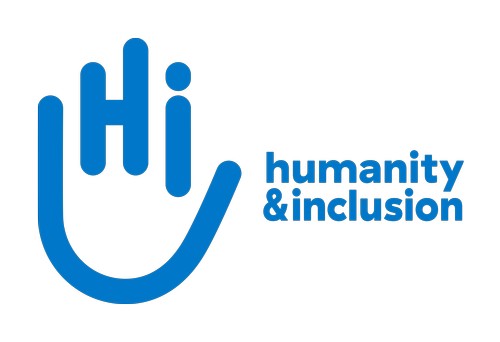New video! MIW Bogota workshop on scaling strategies
This brand new video presents the work conducted during the Making It Work workshop, organized in Bogota, Colombia (April 2017), titled "Exploring multiplier effect strategies to amplify outcomes of good practices for women and girls with disabilities".

During this event, 5 Good Practice Holders from the "Gender and Disability project" promoting the rights of women and girls in Latin America reflected on means to increase the positive impact of their practice. In that objective, they worked around the Theory of Change framework, and identified opportunities, allies, and strategies to scale up their good practices at national level.
To learn more about this workshop, you can watch the video, with English and Spanish subtitles (French subtitles coming soon, stay tuned!). Do not hesitate to leave a comment and tell us what you think!
You can also share your insights by joining us on Facebook and Twitter! And if you want to know more about this worksohp, please contact us directly.
----
Video script (English):
Priscila Rodriguez (Disability Rights International): We believe that the best way to scale this practice, which we are already working on, is vertical. It’s a vertical strategy, seeking to institutionalize a vision of integration.
Slide: What is Making It Work?
Priscille Geiser (Handicap International): Making It Work is a methodology that was started by Handicap International quickly after the adoption of the CRPD in 2006. It is a participatory approach for advocacy that draws primarily on the evidence of what has proven successful to provide solutions through the evidence of good practices.
Slide: The MIW Gender and Disability project
Priscille Geiser: We decided to prioritize an issue that is largely undocumented, at the intersection of gender and disability, that is the issue of preventing and responding to violence against women and girls with disabilities.
Silvia Quan (MIW Technical Advisory Committee): In the Advisory Committee, there are persons from different countries, and we bring experiences in gender and Disability at an international level, with which we aim at supporting organisations that are promoting practices that e consider as “good”, regarding prevention y response to violence against Women and girls with disabilities.
Slide: What is your good practice?
Antonia Irazabal (Uruguay Ministry of Social Development): The good practice from Uruguay is called “Sweeping barriers”, and this is its objective: reduce the barriers that we face, as women with disabilities, when accessing a sexual and reproductive health service.
Consuelo Pachon (ASDown Colombia): Our good practice in Colombia is that women with disabilities are leaders in the topics of sexual and reproductive rights.
Ileana Chacon (Costa Rican Foundation of Human Rights, Women and Disability): Before the practice, girls and women with disabilities were invisible to the Costa Rican governmental institutions. Through the practice we made it possible for the governmental institutions in disability and gender issues to start actions and to pay attention to our human rights. Nowadays, many things are different, have been changed.
Natalia Santos Estrada (Colectivo Chuhcan): My practice consists in the empowerment of Women with Disabilities in Mexico, supported by Disability Rights International, and through peer support. It resulted in a strengthening of the leadership, of the support in the representation of these women in fora, workshops and events.
Priscila Rodriguez: Disability Rights International is doing a project in Guatemala to fight the institutionalization of women and girls with disabilities in institutions. We have found high rates of abuse against these populations, including sexual abuse, physical abuse, forced sterilization and inhumane and degrading treatment, and even torture.
Slide: The regional workshop
Priscille Geiser: What could be the strategies so that we move from a little small scale social innovation to something that will benefit a broader range of women and girls with disabilities? That was the purpose for this workshop in Bogota where we focused first on the Good Practice Holders from Latin American practices and gathered people from Mexico, Colombia, Uruguay, Guatemala and Costa Rica to discuss this notion of multiplier effect and scaling strategies.
What does it mean? How can you expand from your social innovation, to ensure more sustainable changes, to influence policy reports for example, to make sure that what you have done in one particular village can be replicated in more villages, etc.
Malcolm McLachlan (Global Health Impact): It’s been a unique experience in the sense that we have tried to combine 2 methods of increasing the impact of the very effective good practices that were discovered in the first phase of the project. We have been looking at the Theory of Change approach and using the ExpandNet model for scaling.
The scaling strategy that people use may reflect whether they want to increase things horizontally in the sense of replicating them, or whether they want to increase things more vertically, in the sense of producing structural change in the way in which the institutions within society work. There’s also option of grafting the particular intervention on some larger initiative that’s happening and there’s also the possibility of spontaneous scaling. So when you put all these things together, what you really get is the particular innovation that people have initially, plus you get the ideas of how that people want to scale up their intervention. And when you put it those two together you get the overall Theory of Change. And that’s what we’ve been working on developing here in Bogota.
Slide: What did you learn during the workshop?
Antonia Irazabal: It was very interesting to participate in this workshop, because we have conceptualized the experiences and it appeared evident that we need to detach ourselves from them to see them in their context, analyze the situation in which they are implemented, and detach ourselves as protagonists, to insert them in a wider framework of influence and transformation.
Monica Cortes (ASDown Colombia): I consider that the workshop gave us many tools to plan and set up the next step that we need to achieve with our practice, and turn it into a tool for change at national level.
Ileana Chacon: I now have many tools that I can take home in order to continue, to scale the good practice, which I really wanted and which I did not really know how to
Priscille Geiser: My experience of the workshop was really enriching, because there was such a lively and effective participation of women who gathered in this workshop, and I think there was this experience of connecting the dots, bringing the experience of human rights global framework for example with Silvia Quan from the CRPD Committee who could bring experience in the discussion, but also building on very concrete challenges that are faced at the national level, and trying to link all this to a more theoretical reflection on the steps towards scaling.
Natalia Santos Estrada: We can visualize the projects as new advances, that are very valuable because they can be replicated in other countries and provide great support for all countries.
Priscila Rodriguez: It has been a great experience to learn more about what other countries are doing to protect women and girls with disabilities from violence as well as how to have more impact on how to plan scaling of our practices. It has been a great learning experience.
Silvia Quan: I think this workshop was very good in the sense that the promoters of these practices could see their potentiality and could then put all their efforts in reaching these multiplier effects
Slide: What will your next steps be?
Antonia Irazabal: From now on it is imperative to involve more actors in this strategy to understand what the final impact is and what the necessary support will be, directly involving women with disabilities in their sexual and reproductive rights, and in their capacity to decide on the life they want to have as girls and women in Uruguay
Consuelo Pachon: What I want to do from my personal perspective is to go and tell the whole working and steering team to look for a structured strategy, and simplify our good practice above all. The other thing is to make an evaluation with this same team, of which are the fundamental elements of our practice so that we start with them to transcend the institutions in the organization. And the other is to assess the context to find allied institutions and support networks that allow us to carry out our practice at the national level.
Monica Cortes: Define the topic very well and also where we want to take our good practice. And the other is the precise steps of the situational analysis, which we must reach more judiciously, as we say in terms of planning, to be able to give the practice a very systematic impact on the social change that we want
Ileana Chacon: Now at the end of this workshop I know exactly how we want to move forward, our horizons. Now I have a clear idea that we want to reduce gender-based violence against women with disabilities. We also want to advocacy so that programs services information and emergency services become available for women and girls with disabilities in Costa Rica, because many things that are available there, many tools are not accessible.
Natalia Santos Estrada: Taking the time to work on scaling, and being able to diversify it in very strategic points to be able to carry out and build routes that lead us to better results
Priscila Rodriguez: We are going to continue with de-institutionalization and promoting the rights to community integration in Guatemala, we’ll continue to focus on psychiatric hospitals where women are suffering systematic abuse but we will also now broaden our scope to girls and in general children in institutions. We believe it is crucial that the right to community integration and to grow up in a family is respected and is guaranteed for every child with and without a disability in Guatemala as well as for every adult detained in an institution.
Copyright © 2025. All rights reserved.
